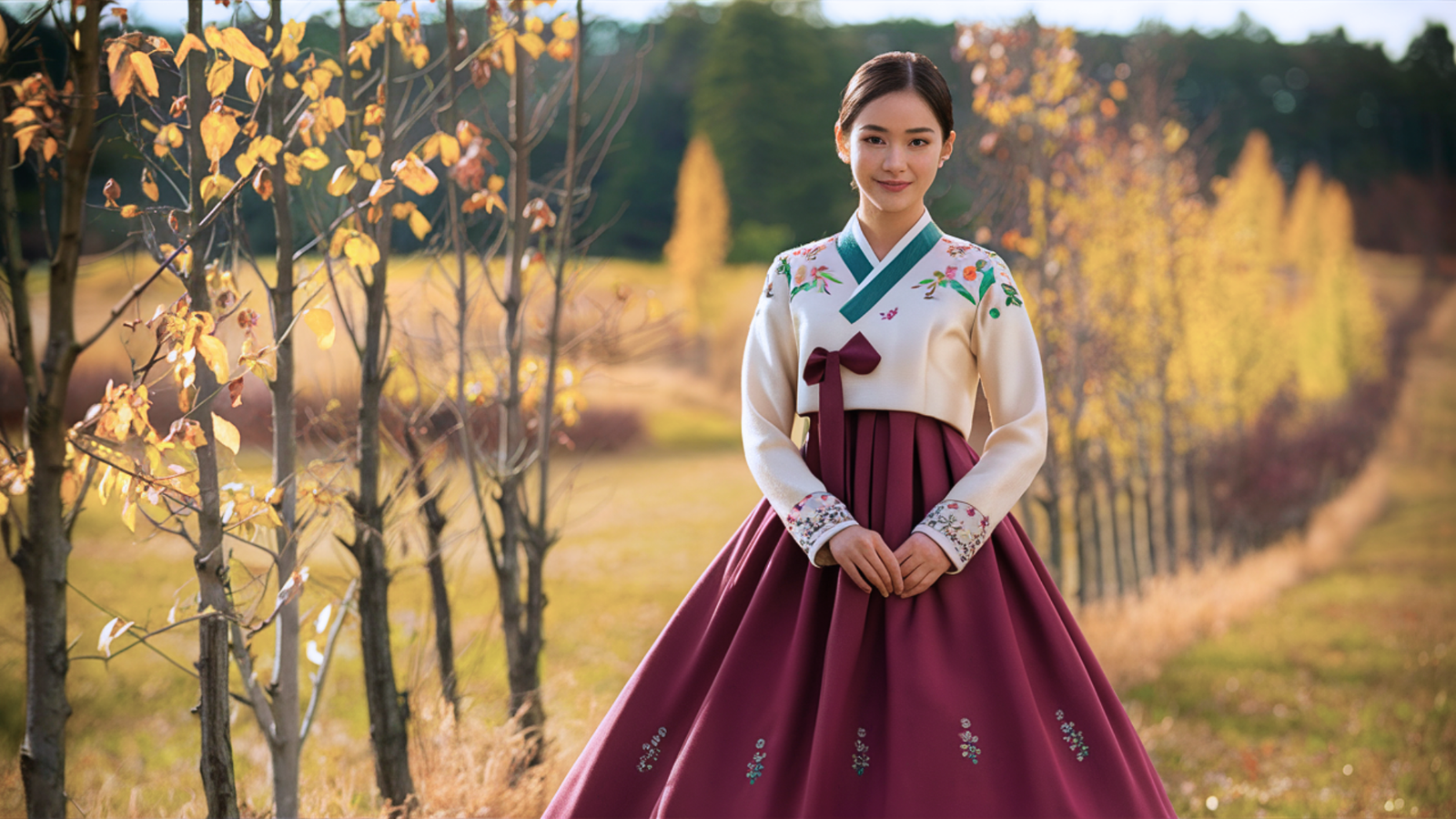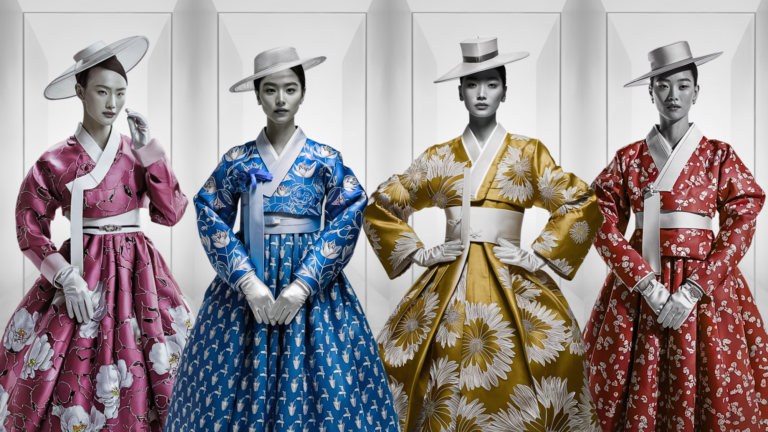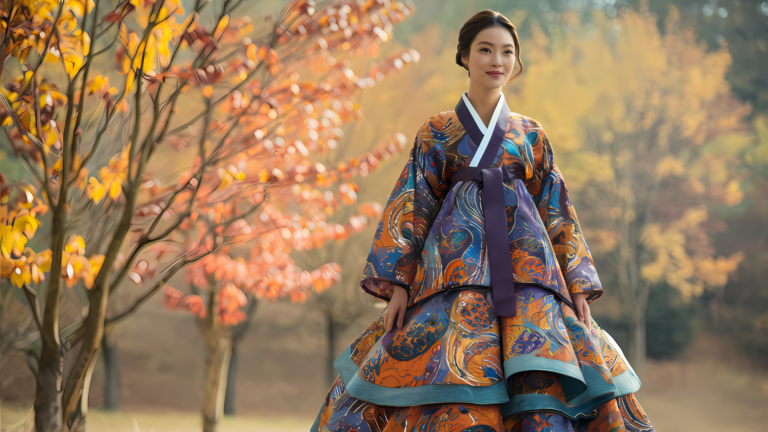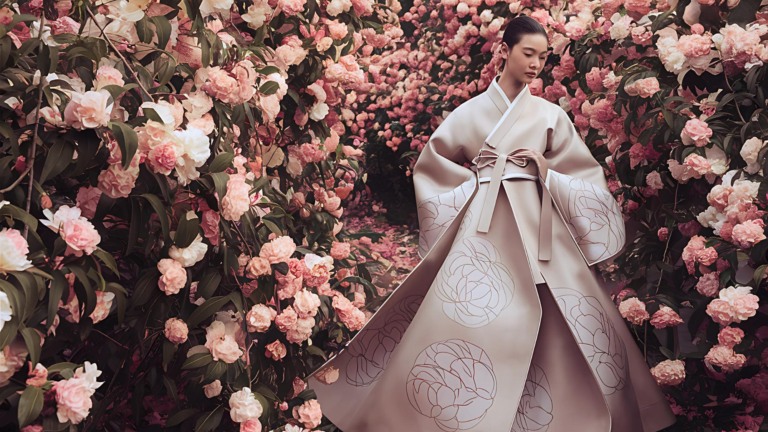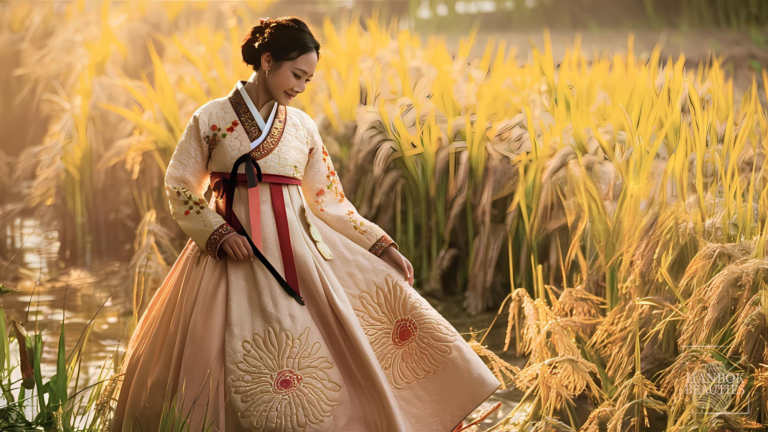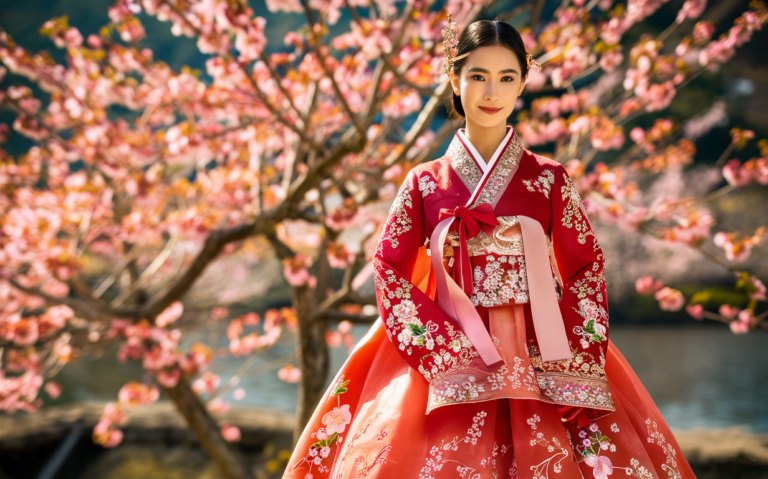5 Essential Nature Motifs for Fall Seasonal Hanbok
Autumn in Korea brings a rich tapestry of seasonal elements to hanbok design, with nature motifs for fall seasonal hanbok playing a particularly significant role. These carefully selected patterns tell stories of Korea’s cultural heritage while celebrating the season’s profound beauty. Each motif carries deep symbolism, reflecting the sophisticated artistic traditions in Korean dress. For a broader understanding of hanbok’s cultural significance, explore our article on Hanbok: The Living Canvas of Korean Culture.
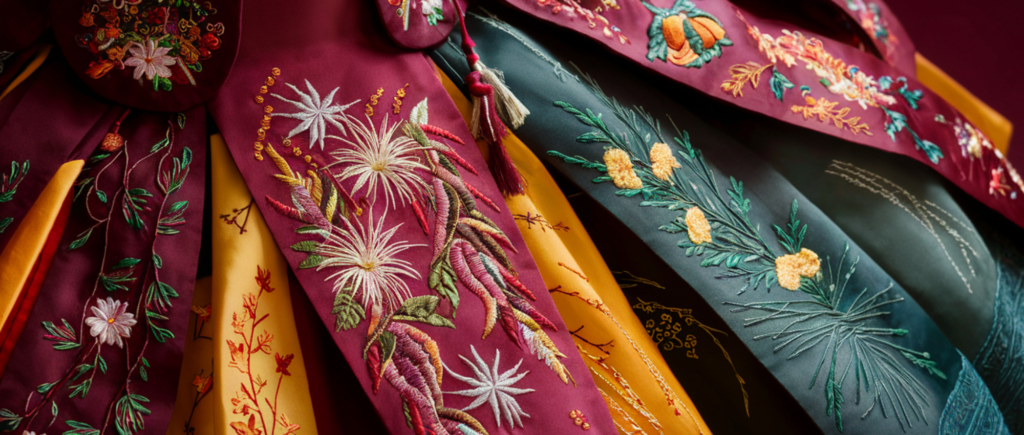
The Artistry of Nature Motifs in Fall Seasonal Hanbok
Nature motifs for fall seasonal hanbok capture the season’s distinct character through sophisticated design choices. These patterns feature autumn’s deep hues and layered compositions, reflecting the maturity and abundance of the season. Master artisans carefully select and arrange these motifs to create visual stories that honor Korean cultural traditions.
The Essence of Autumn in Hanbok Design
Traditional fall seasonal hanbok embraces rich, deep hues that mirror nature’s autumn display. Deep burgundy, forest green, warm brown, and burnished gold dominate the palette. These colors traditionally appear in silk and ramie fabrics, with heavier silk used for formal wear and cotton for everyday pieces. To explore more about how hanbok changes with the seasons, read our comprehensive guide on The Art of Transitional Hanbok: From Summer to Autumn.
Balancing Tradition and Innovation in Autumn Motifs
Contemporary designers respect traditional patterns while finding fresh interpretations of nature motifs for fall seasonal hanbok. Modern techniques allow for more intricate detail work while maintaining each motif’s essential character. This thoughtful approach ensures these designs remain both culturally authentic and relevant for today’s wearers.
Chrysanthemum: The Crown Jewel of Autumn Flora

Among the nature motifs for fall seasonal hanbok, the chrysanthemum ((국화, gukhwa) reigns supreme. As one of the Four Gracious Plants alongside plum blossoms, orchids, and bamboo, it embodies nobility through its steadfast autumn blooming, symbolizing scholarly pursuits and perseverance. To learn more about warm color choices in fall hanbok, read our guide on Autumn’s Palette: 5 Timeless Warm Tones for Fall Seasonal Hanbok.
Royal hanbok designs traditionally paired chrysanthemum with auspicious symbols like butterflies and clouds, conveying wishes for longevity and wisdom. The flower’s connection to the ninth lunar month, when scholars took their civil service examinations, established it as a revered symbol among nature motifs for fall seasonal hanbok.
Traditional artisans craft chrysanthemum patterns through gold-threaded silk embroidery, creating dimensional designs that play with light. Modern interpretations preserve these cherished nature motifs for fall seasonal hanbok through innovative techniques, from metallic accents to eco-friendly laser-cut details.
Maple Leaves: Nature’s Living Canvas

Maple leaves (danp(단풍, danpung) create spectacular displays among nature motifs for fall seasonal hanbok. Their transformation from vibrant green to brilliant red symbolizes autumn’s dramatic changes, making them essential elements in traditional Korean dress design.
Master artisans render maple leaf patterns with sophisticated gradient stitching and layered threadwork, creating dimensional veining that mirrors nature. Traditional placement techniques in nature motifs for fall seasonal hanbok create visual movement reminiscent of falling leaves.
Contemporary designers arrange maple motifs asymmetrically near hemlines and across shoulders, working in colors from deep crimson to burnt orange. These interpretations maintain traditional principles while incorporating modern techniques like digital printing.
Wild Cosmos: Dancing in Autumn Breezes
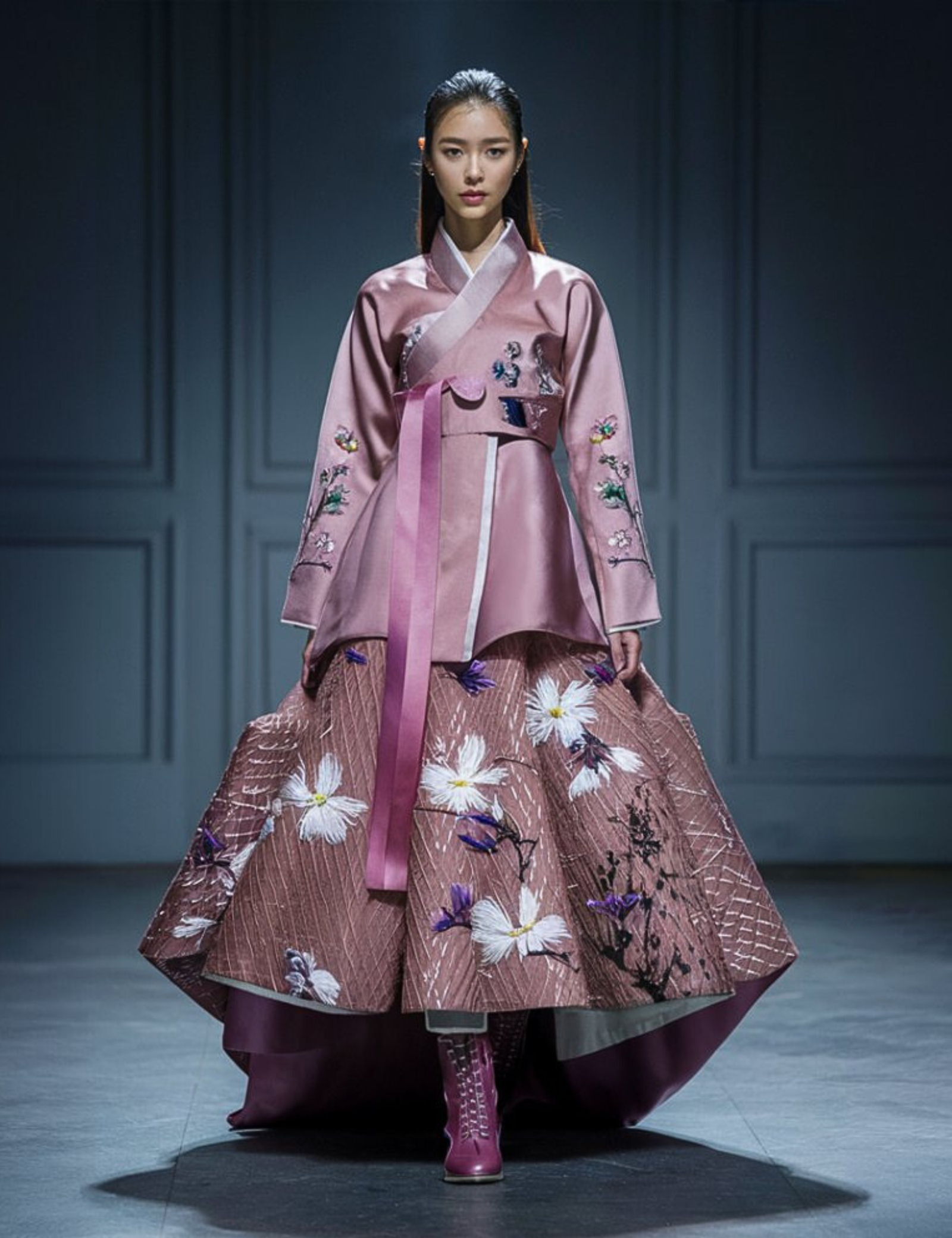
The wild cosmos (코스모스, goseumoseu) brings a touch of ethereal grace to nature motifs for fall seasonal hanbok, embodying the gentle transition into autumn. These delicate flowers, blooming in abundance across Korean landscapes during the harvest season, symbolize purity and harmony in traditional design elements.
Traditional hanbok artisans historically paired cosmos motifs with flowing cloud patterns and butterflies, representing the dance of autumn winds and seasonal transformation. The flower’s prominence in fall festivities and its connection to the harvest season established it as an essential motif in seasonal hanbok design, particularly for ceremonial autumn wear.
Master craftspeople render cosmos patterns through intricate silk thread embroidery, creating dimensional petals that capture the flower’s natural movement. Contemporary designers honor these cherished nature motifs for fall seasonal hanbok through innovative interpretations, incorporating techniques from delicate beadwork to subtle gradient dyeing.
Pine Needles and Cones: Eternal Symbols of Perseverance
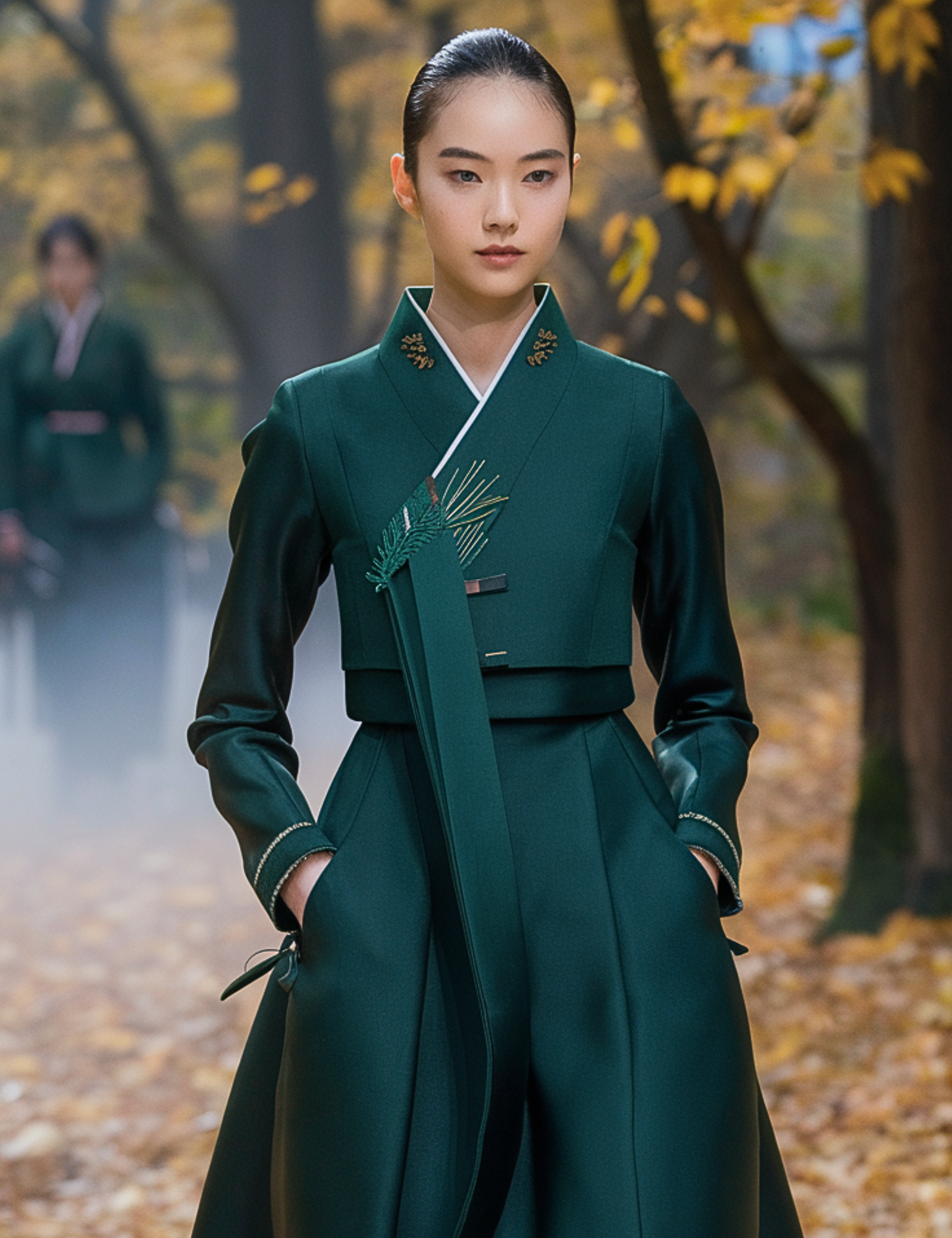
Pine elements (솔잎, sol-ip) stand as enduring symbols among nature motifs for fall seasonal hanbok, representing unwavering strength and longevity. As one of Korea’s most revered trees, the pine’s evergreen nature embodies persistence through seasons, making it a powerful motif in traditional dress design. Discover more subtle autumn design elements in our article on 5 Lesser-Known Motifs in Fall Seasonal Hanbok: Hidden Gems of Korean Tradition.
Historical hanbok designs feature pine motifs alongside other auspicious symbols like cranes and clouds, conveying wishes for steadfast wisdom and endurance. The pine’s significance in Korean culture, particularly its association with scholarly virtues and nobility, established it as a distinguished element in formal hanbok attire.
Traditional artisans express pine patterns through precise needlework in deep forest greens and silver accents, creating textural designs that capture natural depth. Modern interpretations maintain these treasured nature motifs for fall seasonal hanbok through sophisticated techniques, from metallic thread embellishments to innovative layered embroidery.
Persimmon: Autumn’s Golden Abundance

Persimmon (gam) motifs embody autumn’s abundant harvest among nature The persimmon (감, gam) emerges as a celebration of abundance among nature motifs for fall seasonal hanbok, representing autumn’s golden harvest. This beloved fruit, deeply woven into Korean autumn traditions, symbolizes prosperity and sweet fortune in traditional dress design.
Classical hanbok compositions feature persimmon motifs alongside harvest symbols like chrysanthemums and maple leaves, expressing gratitude for autumn’s bounty. The fruit’s connection to fall festivities and its cultural significance in Korean harvest celebrations established it as a cherished element in seasonal hanbok patterns.
Master embroiderers traditionally render persimmon designs through dimensional techniques, using rich orange and gold threads to capture the fruit’s natural fullness. Contemporary artists preserve these valued nature motifs for fall seasonal hanbok through modern applications, from subtle tonal embroidery to innovative surface treatments.
Creating Harmony with Autumn Nature Motifs
The artistry of fall hanbok lies in harmoniously combining these nature motifs for fall seasonal hanbok. Traditional designs balance different elements through careful placement and scale, creating visual stories that celebrate autumn’s beauty.
Master artisans consider the relationship between each motif, ensuring balanced compositions that flow naturally across the garment. This thoughtful arrangement of nature motifs for fall seasonal hanbok creates designs that are both culturally meaningful and aesthetically pleasing. For regional variations on these traditional designs, explore our piece on 6 Enchanting Secrets of Jeju’s Fall Seasonal Hanbok.
Through generations of refinement, these five essential motifs continue to capture autumn’s essence in Korean dress, preserving cultural heritage while embracing artistic innovation.
